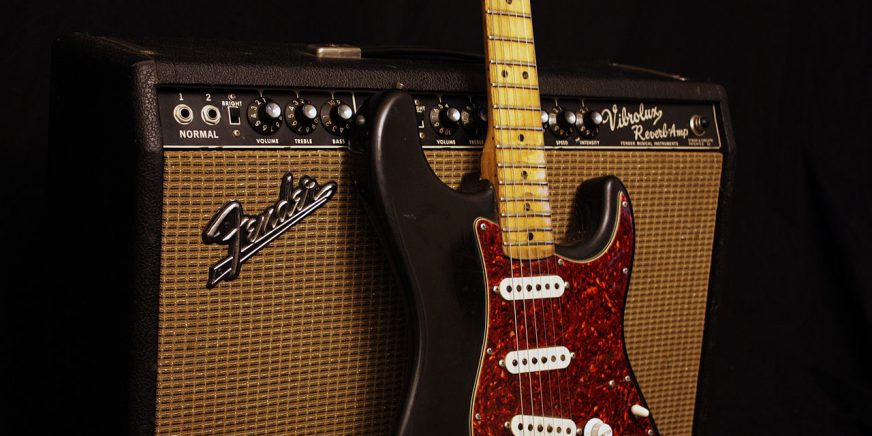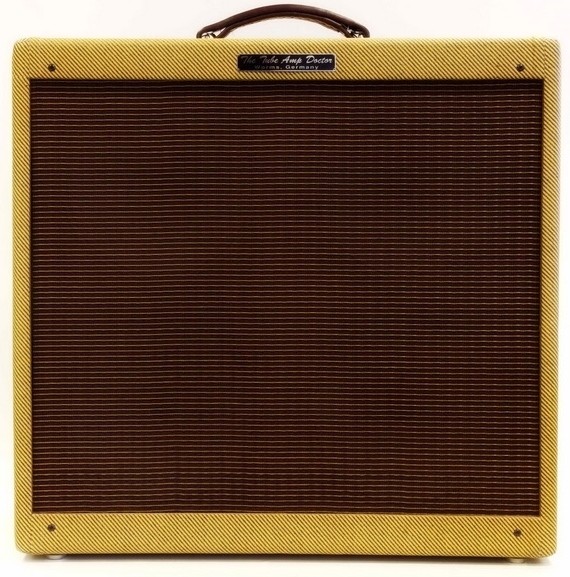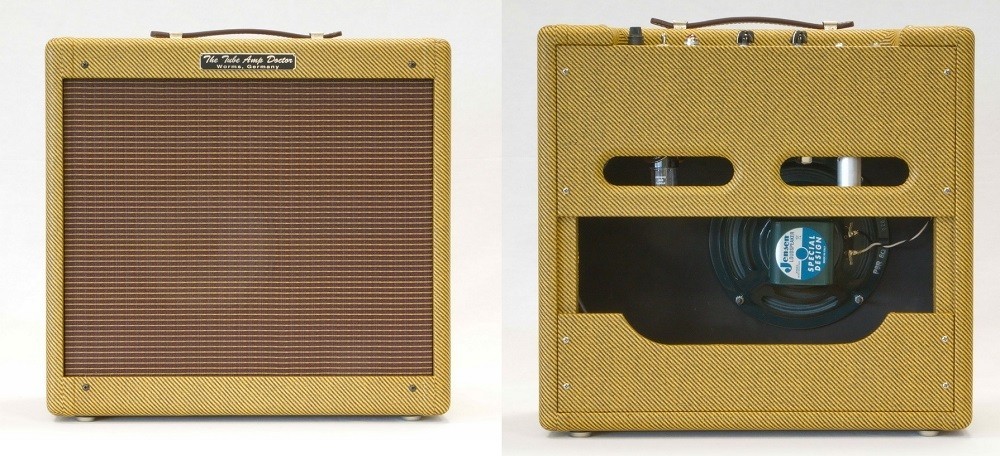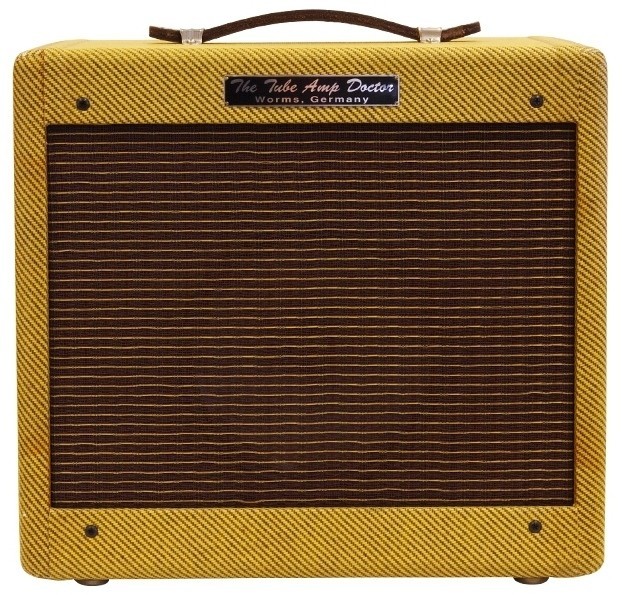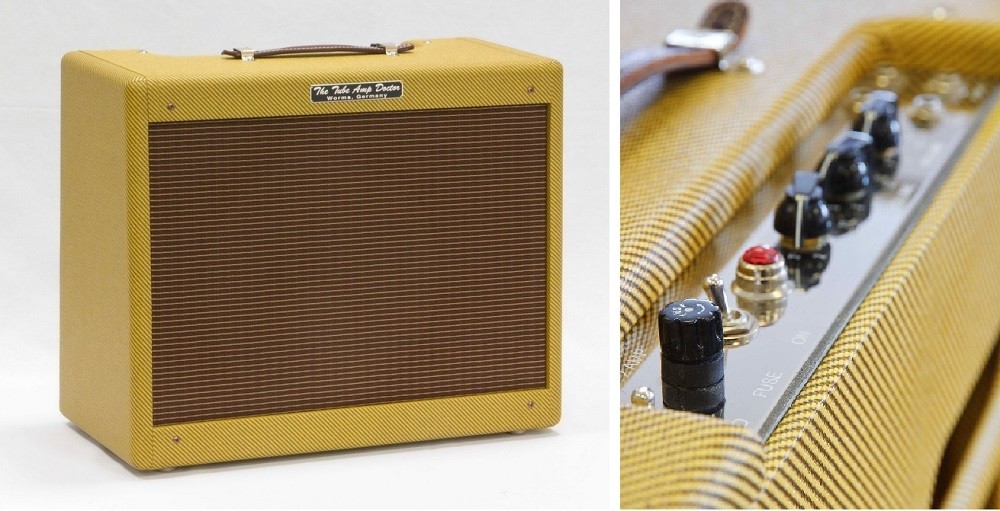« Reminiscence of the Legendary Tweed Amps »
Anyone thinking of vintage jackets worn by an old math teacher when hearing the word “Tweeds” is in the wrong place – in today’s article, we’re delving into the legendary vintage tube amplifiers from the house of Fender. Hardly any amp series has achieved such fame. But can vintage tube amplifiers really be summarized as a series or line? What defines the amplifiers of that time, and where does the fame of vintage tube amps come from? We explore the myth and take a close look at amplifiers in the Tweed style. And, of course, we also consider modern alternatives – such as the TAD Amp Kits in Tweed style!
Fender Tweed Amps – Defining the Term
To approach the phenomenon of these amplifiers, it must first be defined which of the numerous vintage tube amplifiers clad in yellowish fabric actually fall into the category.
Tweed Amps – Origins
After the talented radio technician Leo Fender turned his attention to the development of instrumental amplifiers, vintage tube amps were handcrafted. Aside from (then) new technical developments, the devices also impressed visually. The exterior of the amplifiers, produced from 1948 to around 1964, was covered with a robust fabric material. This yellowish material would become the preferred covering for amps and cabinets throughout the era – and thus also the namesake for the Tweeds.
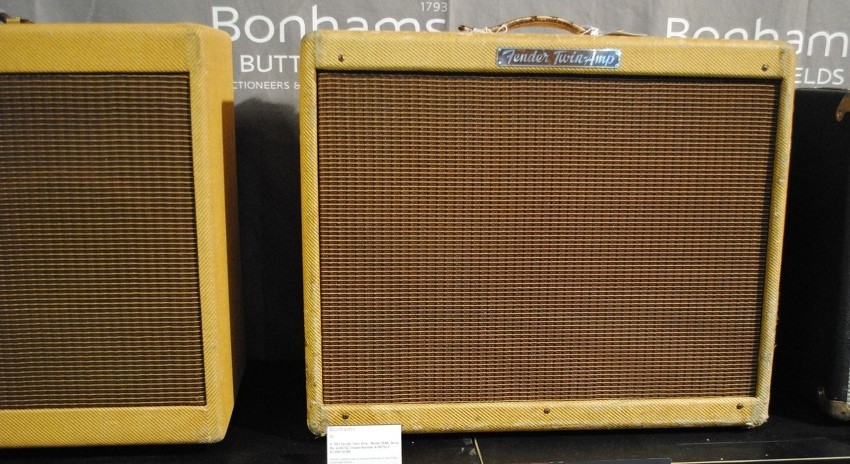
Which Vintage Tube Amplifiers are Tweed Amps?
Throughout the company’s history, Americans developed a large number of different vintage amplifiers. The series and models of tube amplifiers mainly differ in internal structure and electronics. Therefore, a variety of models fall into the category of classic Tweeds, as they are commonly referred to as vintage. Classic representatives of these amps with tubes include amps from the Princeton, Twin, Deluxe, or Champ series.
But beware: Not all editions of the mentioned series are considered Tweeds by purists. The time frame from 1948 to 1960 is often mentioned as the defining limit, with the Champ series being covered in Tweed fabric until 1964.
Tweed Amps Today – Modern Homages to the Original
Of course, musicians’ enthusiasm for Tweeds has not escaped the attention of manufacturers. In addition to numerous reissues and special editions, completely redesigned vintage tube amplifiers are now also covered with Tweed fabric, aiming to visually and sonically emulate the historical prototypes. An example of such a modern amp is the Eric Clapton Signature amplifier. Introduced in 2012 as part of the Signature Series, the EC amplifier features the exterior (and, most importantly, the sound) of vintage models.
What Really Matters – The Sound
Sure, the covering material of the amplifiers is stylish, but with Tweeds, that’s only secondary. The distinctive sound, considered by many guitarists as the Holy Grail of tubes, is what defines all Tweeds. However, if you ask a hundred guitarists, you’ll likely get about 104 answers to the question of how to describe the classic Tweed amplifier sound.
To provide a rough overview of the sound of different models, we have created a brief compilation of songs and albums by famous guitarists who have shaped and popularized the sound of Tweed amps with their playing:
Neil Young – Deluxe
Sound has always been the essence for Neil Young. Both vocally and through the guitar, he has always been a pioneer of “good tone” through the tube. His guitar sound is characterized, among other things, by an old Deluxe amplifier. The rich, growling sound of the tubes is particularly evident in songs like “Cinnamon Girl” or “Like A Hurricane.” The subtle breaking of the sound, especially in the louder passages, is a true delight!
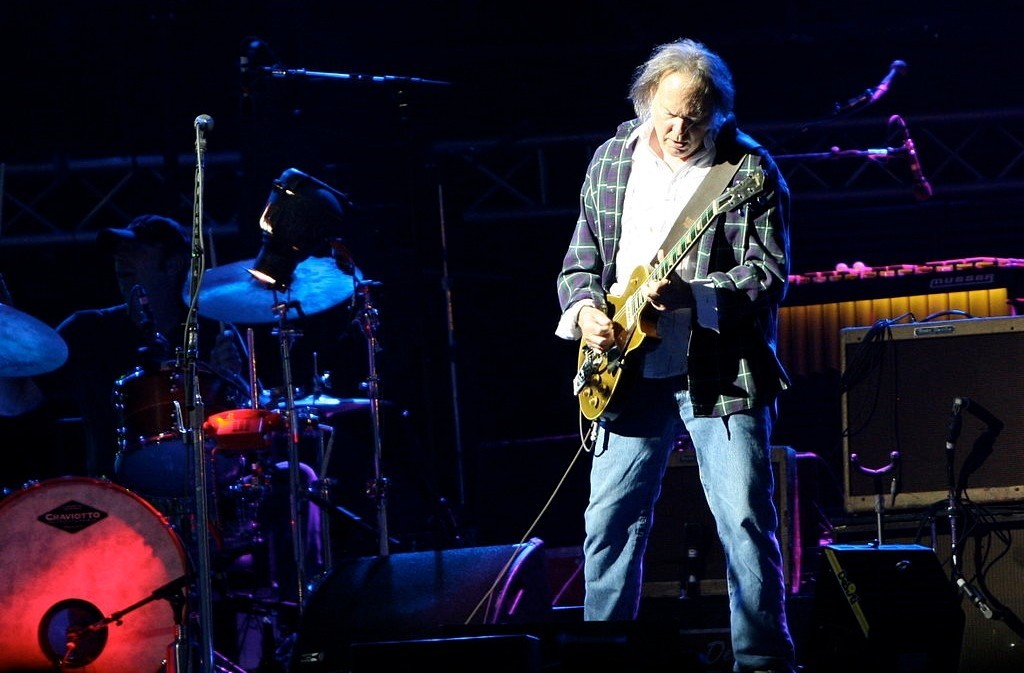
Eric Clapton – Champ
Certainly, Eric Clapton is considered one of the biggest names in the business. With his sound, he has set new standards, thanks in part to a Champ amplifier. The sound of the small 5-watt vintage tube amplifier with just a small speaker is said to be the origin of the legendary Layla track. However, hardly anyone can provide precise details about the exact composition of the sounds today – even Mr. Clapton himself has been quoted with different statements. Nevertheless, the Layla tone is close to what the Champ has to offer: Warm, natural sound with distortion from the tubes under heavier load – a dream!
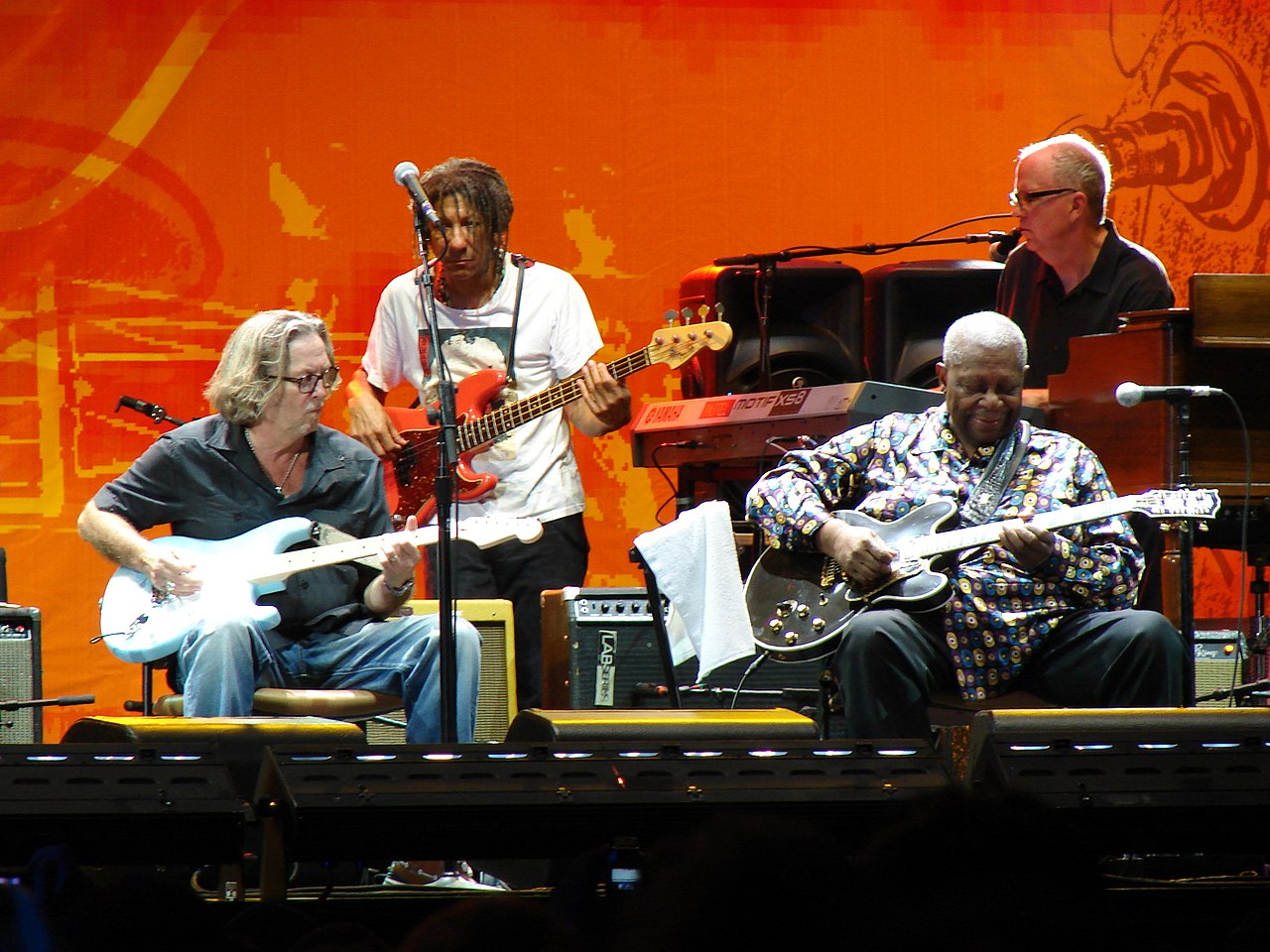
Pete Townshend – Bandmaster
Pete Townshend has made a name for himself with his work in The Who. The sounds of the Gibson SG’s dedicated destroyer were shaped over much of his career by an American-made Bandmaster and its accompanying tubes. The amplifier is particularly well heard on “Who’s Next”: Strong midrange emphasis and clear, harmonic cleans make the record one of The Who’s best recordings, earning the tubes a place in the Hall of Fame.
Modern Alternatives to Vintage Amplifiers – The TAD Tweed-Style Kits
As great as the sound of the original Tweed amps is, few guitarists are likely to have the luck (and the budget) to acquire an original amplifier. Fortunately, there are modern alternatives that come closer to the original sound than one might think. We present three variations of the TAD Tweed Style amplifiers for guitarists:
One-6 GS, 5F2 Style
In the style of the Fender Princeton, the TAD amplifier kit delivers a single-ended Class A tube amplifier of the highest class. With approximately 6 watts of power, the One-6 is not a powerhouse, but it provides a beautiful, creamy tube resolution and can particularly impress with very tolerable noise behavior, especially in overdrive.
For those confident in assembling an amplifier kit, the One-6 GS offers the sound of a legend – at a fraction of the price!
One-5, 5F1 Style
Clearly – here, the legendary Champ plays in its specialty. As described earlier, Eric Clapton once used a 5-watt Fender Champ to achieve the Layla sound. With its simple construction and relatively low power, the One-5 is like a prototype of the tube amplifier: Clear, warm clean sounds alternate with fat, structured, and harmonic overdrive sounds. The sound of the TAD amplifier particularly convinces in a studio situation!
Tweed One-Twelve-16, 5E3 Style
Here come the big guns: Although the One-Twelve, with its 16 watts, is still not a powerhouse, it nevertheless provides enough power to rock in the style of the Deluxe. For those in search of the typical Neil Young sound, here is an affordable, high-quality alternative to the original.
For those who don’t feel confident in assembling such a kit, pre-built and wired versions of the amp are also available – enjoy!
___________________________________________________________________________________________________________________________
Image sources:
Title image: By John Tuggle from Decatur, Ga, USA – strat and amp, CC BY 2.0, https://commons.wikimedia.org/w/index.php?curid=41581624
1957 Fender Twin Amp By Deidre Woollard – DSC_0010, CC BY 2.0, https://commons.wikimedia.org/w/index.php?curid=27503879
Neil Young: By Alterna2 – https://www.flickr.com/photos/alterna2/3582360735/, CC BY 2.0, https://commons.wikimedia.org/w/index.php?curid=12230246
Eric Clapton and others: By Alex G from Puteaux, France – Eric Clapton & B.B. King, CC BY 2.0, https://commons.wikimedia.org/w/index.php?curid=65965761
 Tubeampdoctor Magazin
Tubeampdoctor Magazin
